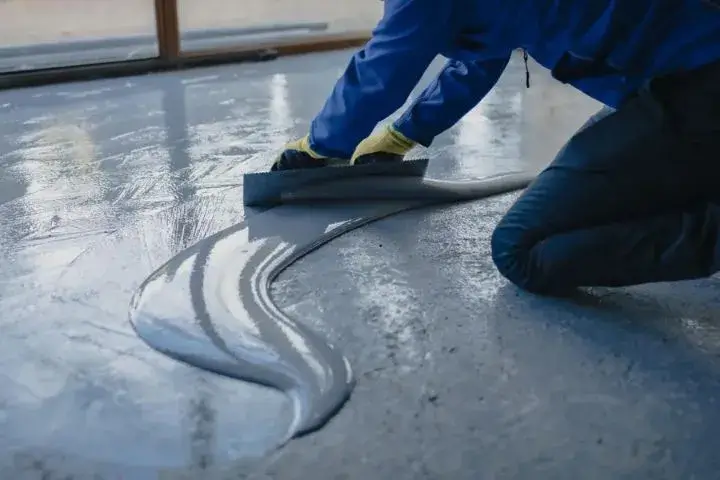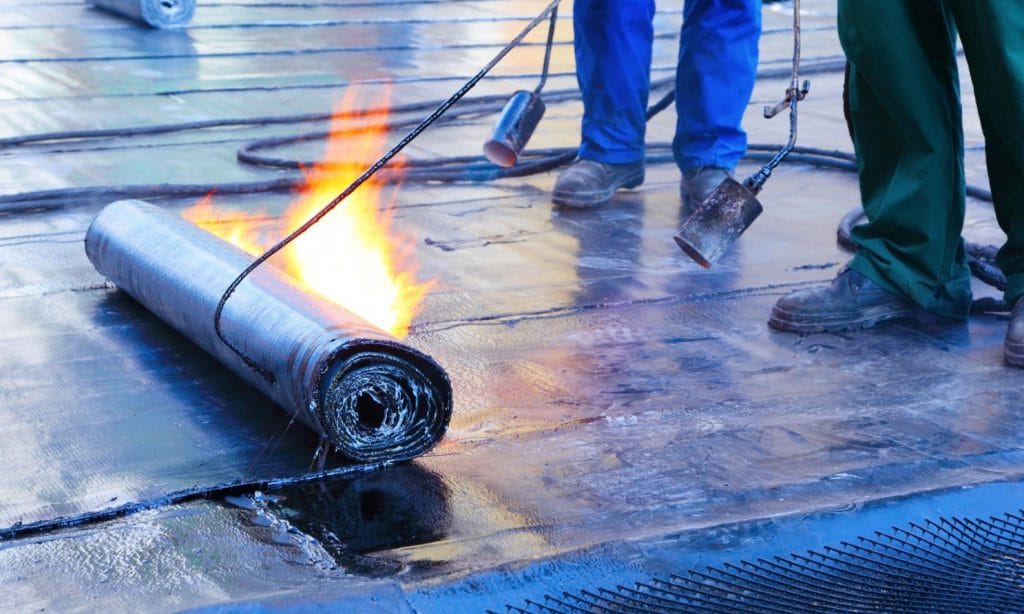Choosing the Right Drainage & waterproofing company Omaha: A Step-by-Step Process
Exactly How Waterproofing Works: A Detailed Consider Techniques and Technologies
Waterproofing is important for securing frameworks from moisture-related damage. It includes different techniques and innovations that create barriers against water invasion. Standard approaches, such as compressed clay, coexist with contemporary innovations like liquid-applied membrane layers. Comprehending the subtleties of these approaches is vital for effective application. The efficiency of any waterproofing service pivots not just on the techniques utilized however likewise on ongoing maintenance and inspection. What are the vital aspects that affect lasting performance?
Understanding the Fundamentals of Waterproofing
Waterproofing is a necessary procedure that shields structures from water breach, which can cause significant damage gradually. This method entails the application of various products and techniques developed to develop an obstacle versus dampness. The main goal is to stop water from penetrating surface areas, which can create deterioration, mold and mildew growth, and structural instability.Various factors influence the choice of waterproofing approach, consisting of the sort of structure, its location, and environmental conditions. Recognizing the physics of water motion and the buildings of various materials is crucial in selecting an efficient waterproofing solution.Effective waterproofing not only safeguards buildings however also improves their long life and stability. Normally, it is incorporated right into the design stage of building to guarantee extensive protection. As recognition of water-related concerns grows, the value of recognizing waterproofing principles comes to be significantly clear to architects, contractors, and homeowner alike.
Typical Waterproofing Methods
Traditional waterproofing techniques have actually been used for centuries, counting on reliable strategies and products to guard frameworks from water damages. Among the earliest techniques involves making use of clay, which, when compacted, develops an all-natural barrier versus wetness. Furthermore, bitumen, a sticky, black product obtained from oil, has actually been used for its water-resistant residential or commercial properties, typically put on roofing systems and foundations.Another method includes the application of lime-based plasters, which supply a breathable layer that enables moisture to escape while stopping water access. Thatch roofing, a standard approach still seen in some cultures, offers superb waterproofing due to its snugly loaded straw layers.Moreover, the use of rock and block has projected, as these materials are inherently immune to water when effectively set up. On the whole, standard waterproofing techniques stress the relevance of picking suitable products and building practices to boost longevity against water invasion.
Modern Waterproofing Technologies
Advancements in modern waterproofing technologies have revolutionized the way structures are secured from water damage. Cutting-edge techniques such as liquid-applied membrane layers and innovative sealers have actually enhanced the efficiency and convenience of waterproofing solutions. These modern technologies allow for smooth application, reducing the risk of leakages and guaranteeing detailed protection over intricate surfaces.Moreover, the combination of wise modern technologies, such as moisture sensing units and automated monitoring systems, makes it possible for real-time analysis of waterproofing performance. This proactive technique helps with timely upkeep and lowers lasting repair work costs.Additionally, advancements in spray-applied finishings use fast application and outstanding bond, adjusting to various substrates while providing robust security. Methods like polymer-modified systems further improve versatility and longevity, making them ideal for diverse settings. Overall, modern waterproofing technologies not only minimize water invasion however also add to the longevity and sustainability of frameworks, marking a significant change in the market.
Products Utilized in Waterproofing
The performance of waterproofing services heavily counts on the products made use of in their application. Various products are employed to develop obstacles against water access, each with one-of-a-kind homes matched for different atmospheres. Generally utilized products include membranes, layers, and sealants.Liquid-applied membrane layers, frequently made from polyurethane or acrylic, create a smooth obstacle that adjusts to complex surfaces. Sheet membrane layers, usually created from rubber or thermoplastic, offer longevity and are suitable for larger locations. Additionally, cementitious waterproofing products, composed of cementitious compounds, provide superb attachment and flexibility.Sealants made from silicone or polyurethane are important for joints and seams, making certain complete defense. Innovative products, such as geo-composite membrane layers, integrate several functions, improving efficiency. In general, the selection of waterproofing products is vital in attaining resilient and effective water resistance, customized to particular project requirements and environmental problems.
Common Applications of Waterproofing
Waterproofing plays a crucial role in different sectors, guaranteeing the long life and stability of frameworks. Usual applications consist of household solutions that shield homes, commercial infrastructure that safeguards organizations, and commercial settings that call for durable defense against wetness. Understanding these applications highlights the relevance of waterproofing in maintaining both safety and capability throughout various settings.
Residential Waterproofing Solutions
Lots of homeowners deal with difficulties with wetness intrusion, making reliable retaining wall waterproofing domestic waterproofing solutions crucial. Different techniques exist to address this concern, consisting of exterior and interior waterproofing systems. Interior services usually involve the application of sealants and layers to basement walls, which aid protect against water infiltration. Exterior methods generally include the installation of drainage systems and water resistant membrane layers that divert water away from the foundation.Additionally, homeowners may take into consideration sump pumps to get rid of water buildup and dehumidifiers to control humidity degrees. Appropriate grading and using gutters likewise play an essential function in handling water flow around the home. By carrying out these strategies, homeowners can considerably decrease the risk of water damages and mold growth, making certain a completely dry and secure living environment.

Business Infrastructure Defense
Effective waterproofing options play a vital role in the protection of commercial facilities. Sump pump installation & replacement Omaha. These strategies are crucial for securing buildings, vehicle parking frameworks, and bridges from water damage, which can endanger structural integrity and lead to pricey repair services. Common applications consist of the installation of membranes, finishes, and sealants that produce obstacles versus wetness seepage. Areas such as basements, roofing systems, and exterior walls are commonly focused on to guarantee durability and durability. Furthermore, waterproofing systems can boost energy performance by protecting against water-related issues that might bring about mold and mildew growth and wear and tear. By implementing robust waterproofing steps, homeowner can protect their investments and maintain operational effectiveness, eventually adding to the overall sustainability of commercial facilities
Industrial Applications Overview
While different industries encounter special difficulties, the requirement for reputable waterproofing remedies remains a consistent in commercial best way to waterproof basement applications. Industries such as manufacturing, construction, and energy frequently run into settings where moisture exposure can jeopardize structural stability and operational performance. In manufacturing facilities, waterproofing is important for shielding equipment and materials from water damage. In building and construction, it safeguards structures and cellars against groundwater infiltration. The energy industry relies on waterproofing for the protection of tools in hydroelectric plants and overseas structures. Additionally, food handling industries use waterproofing to assure health and conformity with safety standards. Generally, effective waterproofing services are necessary for boosting longevity, security, and productivity across numerous industrial setups.
Maintenance and Longevity of Waterproofing Solutions
Waterproofing remedies are developed to offer lasting security versus moisture invasion, routine maintenance is vital to assure their effectiveness and durability. Routine assessments play a substantial duty in determining possible issues such as fractures, peeling off, or indications of water damages. Attending to these problems quickly can protect against additional damage and expensive repairs.Additionally, cleaning up the surface of waterproof areas helps eliminate dust and particles that might compromise the stability of the waterproofing obstacle. It's likewise recommended to reapply protective finishes or sealers as recommended by producers to maintain optimal performance. Environmental aspects, such as UV direct exposure and extreme weather, can impact the life expectancy of waterproofing materials, making routine analysis essential
Frequently Asked Questions
Can Waterproofing Be Applied in Winter?
The inquiry of applying waterproofing in winter increases worries about attachment and curing. Many products might not do at their ideal in low temperature levels, necessitating careful choice and factor to consider of details standards for effective application.
The Length Of Time Does Waterproofing Usually Last?
The duration of waterproofing efficiency varies based upon products and ecological variables. Usually, it can last from 5 to 10 years, however normal maintenance and examinations are necessary to assure peak efficiency and long life.
Is DIY Waterproofing Effective and Safe?
The performance and security of do it yourself waterproofing depend on various elements, consisting of material quality and application method. While some people accomplish satisfactory results, others may experience concerns that jeopardize long-lasting More Help security and structural honesty.
What Are the Indications of Failing Waterproofing?
Signs of failing waterproofing include noticeable water stains, peeling paint, mold and mildew growth, mildewy smells, and wetness in walls or ceilings - Landscape drainage Omaha. These signs suggest jeopardized obstacles, requiring punctual assessment and prospective removal to avoid more damages
Exactly how Do I Pick the Right Waterproofing Service Provider?
